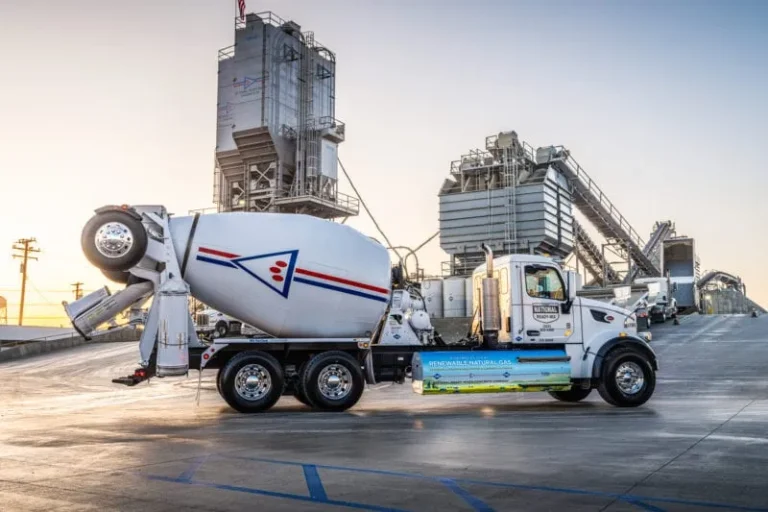Blog

In construction, ready-mix concrete, known for its convenience, efficiency, and consistent quality, forms the bedrock of modern building. However, when a ready-mix concrete truck (commonly called a “mixer truck” or “agitator truck”) arrives at the construction site, a crucial question arises: “How long can a pre-mixed concrete truck wait?”
This question is crucial for ensuring the quality of concrete, construction efficiency, and ultimately, the project’s success. Understanding concrete’s “golden hour” and the factors influencing it is essential for any construction professional.
Ready-mix concrete has a strict time limit from when it’s discharged from the batching plant until it’s fully placed. This is known as its “initial setting time” or “workability time.” This window is crucial for ensuring the quality of concrete.
According to industry standards and experience, ready-mix concrete should generally not exceed 90 minutes (1.5 hours) from the start of water addition and mixing until the completion of discharge. In certain special circumstances, such as high temperatures or the use of accelerators, this time may be shortened. Conversely, in low temperatures or with the use of retarders, the time can be appropriately extended, but it’s generally not recommended to exceed 2 hours.
The workability time of concrete is not constant; it is influenced by a combination of factors:
High Temperatures: Higher temperatures accelerate the cement hydration reaction, causing the concrete to set faster and reducing its workability time. In hot weather, retarders or cooling measures may be necessary.
Low Temperatures: Lower temperatures slow down the cement hydration reaction, delaying setting and extending workability time. However, excessively low temperatures can affect concrete strength development and even lead to frost damage.
Cement Activity: High-activity cements (e.g., rapid-hardening cement) set quickly, resulting in shorter workability times.
Cement Content: A higher cement content yields a greater heat of hydration and a faster setting time.
Retarders: These admixtures extend the setting time of concrete, thereby increasing its workability time. They are commonly used for long-distance transport, hot weather concreting, or projects requiring longer pouring times.
Water Reducers: These improve concrete workability and may indirectly affect setting time.
Accelerators: These significantly shorten the setting time and are used for emergency repairs or special projects.
A lower water-cement ratio (less water) results in a drier concrete, which typically sets faster and has a shorter workability time.
The water absorption, grading, and surface roughness of aggregates can also influence concrete workability and setting time.
The travel time from the batching plant to the construction site directly consumes workability time. Longer distances mean longer transportation times, leaving less time for on-site discharge and pouring.
If a ready-mix concrete truck waits too long, or if the concrete remains in the drum beyond its workable range, it will lead to a series of serious quality issues:
Loss of Workability (Slump): The concrete will gradually become stiffer, losing fluidity, making it difficult to pump and consolidate properly.
Reduced Strength: As the setting progresses, the internal structure of the concrete begins to form. If secondary mixing or water addition occurs at this stage, it will disrupt the already formed cement paste structure, resulting in a significant reduction in strength and potentially failing to meet the design strength.
Segregation and Bleeding: Aggregates separate from the cement paste, resulting in concrete stratification and affecting its uniformity.
Construction Difficulties: The concrete becomes difficult to spread, vibrate, and finish, increasing construction difficulty and labor costs.
Cold Joints: If the time interval between the placement of fresh and existing concrete is too long, cold joints may form, which can affect the structural integrity and watertightness.
Economic Losses: Discarded concrete, rework, and project delays all result in significant financial losses.
To ensure concrete quality and smooth construction, management is required at multiple stages:
Communicate with the batching plant in advance to arrange concrete supply times and quantities based on the construction schedule.
Ensure the construction site has sufficient labor and equipment to quickly discharge and pour the concrete.
The foundation, formwork, rebar, and other materials in the pouring area should be inspected and approved prior to use.
Pumping and vibrating equipment should be debugged and ready for operation.
Ensure clear access for the mixer truck to avoid delays upon arrival.
Select and use retarders, high-range water reducers, and other admixtures appropriately based on weather conditions, transportation distance, and pouring time to extend the workability of the concrete.
Upon the truck’s arrival at the site, strictly prohibit the addition of arbitrary water to the concrete to increase workability, unless explicitly instructed by a professional engineer and with precise control over the amount of water added. Adding water directly reduces the water-cement ratio, resulting in lower strength.
Before discharge, conduct a slump test to ensure the concrete’s workability meets requirements. If the slump is too low and the allowable waiting time has been exceeded, consider rejecting the load or taking other remedial measures.
The question “How long can a pre-mixed concrete truck wait?” does not have a simple, fixed answer. It is a dynamic balance that requires considering multiple factors. Generally, 90 minutes is a critical benchmark. Efficient construction organization, close collaboration with the batching plant, and a deep understanding of concrete properties are key to ensuring that concrete is poured within its “golden hour,” thereby guaranteeing project quality and adherence to schedule. Failing to adhere to this time limit can result in irreparable losses for the project.

How Polycarboxylate Polyether Monomer Affect Concrete Performance
Blog How Polycarboxylate

How Polycarboxylate Superplasticizer Interacts With Slag In Concrete
Blog How Polycarboxylate